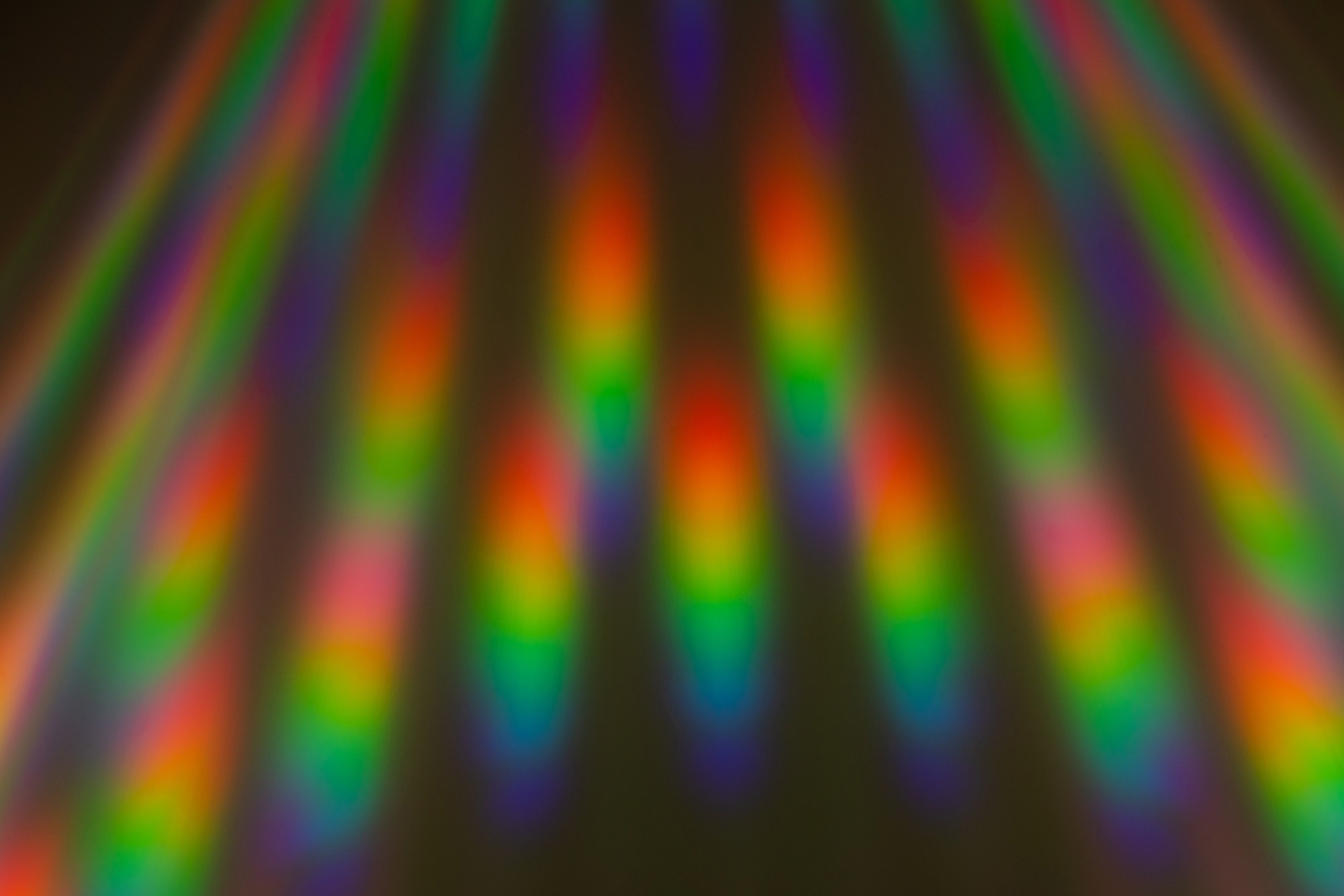 By Owais AliReviewed by Louis CastelAug 15 2025
By Owais AliReviewed by Louis CastelAug 15 2025Spectral anomalies represent a persistent challenge in analytical laboratories, compromising data integrity and necessitating systematic diagnostic protocols. This guide outlines a structured approach to identifying, interpreting, and resolving common spectroscopic issues by linking visual symptoms to underlying optical, electronic, or environmental causes.

Image Credit: Ruslan Lytvyn/Shutterstock.com
Common Spectral Anomaly Patterns
Spectral anomalies often appear as recognizable patterns that aid in diagnosing underlying issues. Identifying these deviations is essential for effective troubleshooting, as each pattern typically points to specific causes such as instrumentation issues, sample preparation errors, or environmental conditions. Recognizing these patterns allows for more targeted corrective actions, ultimately improving spectral quality and reliability.
Baseline Instability and Drift
A drifting baseline in spectroscopic analysis appears as a continuous upward or downward trend in the spectral signal, deviating from the ideally flat and stable baseline. This distortion introduces systematic errors in peak integration and intensity measurements that compound over time and compromise the reliability of quantitative results.
This gradual deterioration is most commonly seen in UV-Vis spectroscopy when deuterium or tungsten lamps fail to reach thermal equilibrium, causing ongoing intensity fluctuations during measurement sequences. In a similar way, FTIR spectroscopy can experience baseline deviations due to thermal expansion or mechanical disturbances that misalign the interferometer, ultimately affecting spectral accuracy.
Even subtle environmental influences such as air conditioning cycles or mechanical vibrations from adjacent equipment can disturb optical components, further contributing to baseline instability.
Accurate diagnosis requires recording a fresh blank spectrum under identical conditions. If the blank exhibits similar baseline drift, the source of the problem is likely instrumental, indicating internal instability or misalignment. Conversely, if the blank remains stable while sample spectra exhibit drift, the source is likely sample-related, such as matrix effects or contamination introduced during sample preparation.1
Peak Suppression and Signal Loss
Missing peaks represent one of the most frustrating anomalies encountered in spectroscopic analysis. These issues arise when expected signals, supported by both theoretical predictions and prior experimental data, fail to appear in the spectrum. This absence can manifest progressively, with peaks gradually diminishing across successive measurements, or abruptly, with previously strong signals disappearing entirely.
For example, in Raman spectroscopy, quality control analysis of pharmaceutical tablets may yield consistent and well-defined peaks at specific wavenumbers, such as 1600 cm?¹ and 1000 cm?¹, under standard conditions. However, a subsequent analysis of seemingly identical samples might produce spectra devoid of these critical features, despite no apparent deviation in sample preparation or operational parameters. This failure renders the spectrum analytically uninformative.
The root causes of these anomalies often involve several components within the analytical system. Detector malfunction or aging can significantly reduce sensitivity, causing peak intensities to drop below detection thresholds. Inconsistent sample preparation, such as variations in concentration or lack of homogeneity, can also lead to insufficient analyte levels for reliable detection.
In Raman spectroscopy, insufficient laser power can result in weak or missing vibrational signals. Similarly, in nuclear magnetic resonance (NMR) spectroscopy, the presence of paramagnetic species may broaden lines or shift peaks outside the detection window, obscuring important signals.
Minor drifts in instrument sensitivity or tuning may further degrade the signal-to-noise ratio, making weak peaks indistinguishable from noise. These complexities highlight the necessity for rigorous control and monitoring throughout all phases of spectral acquisition.2
Spectral Noise and Artifacts
Spectral noise appears as random fluctuations superimposed on the true signal, reducing the signal-to-noise ratio and complicating accurate peak identification. Although some degree of noise is inherent to all measurement systems, excessive noise indicates underlying issues that degrade analytical precision and data quality.
For example, in FTIR spectroscopy, high noise levels can obscure characteristic features such as C–O stretching vibrations near 1100 cm?¹ in polymer samples. Under such conditions, peak intensities become indistinguishable from background fluctuations, preventing reliable quantification.
Multiple sources contribute to this degradation, often in compounding ways. Electronic interference from nearby equipment introduces systematic distortions that resemble random noise. Temperature fluctuations, mechanical vibrations, and inadequate purging in spectroscopic systems further destabilize measurements. Even incorrect baseline correction can introduce artifacts that resemble noise, making accurate analysis difficult.3
Download your PDF copy now!
Technique-Specific Troubleshooting
Different spectroscopic techniques pose unique challenges that necessitate tailored troubleshooting strategies for accurate diagnosis and effective resolution.
UV-Vis Absorption Spectroscopy
UV-Vis systems require verification of lamp performance, ensuring proper wavelength transitions around 340 nm, with sodium nitrite and potassium chloride used for stray light evaluation at 340 nm and 200 nm, respectively.
In addition, accurate reference measurements and blank subtraction in double-beam configurations are critical, as mismatched cuvettes cause baseline offsets and absorbance errors.4
FTIR Spectroscopy
Interferometer performance should be assessed by analyzing interferogram symmetry and quality; any asymmetry indicates the need for service or realignment. Samples must be properly dried, as it causes characteristic absorption features near 3400 cm?¹ and 1640 cm?¹.
Purge gas flow rates and sample compartment seals should be regularly checked and maintained to prevent interference from atmospheric water vapor and carbon dioxide.3
Raman Spectroscopy
Fluorescence interference should be minimized by employing near-infrared excitation and photobleaching protocols before data acquisition. The sample focus must be optimized to maximize signal collection while reducing contributions from unfocused regions.
Laser power settings should be carefully adjusted to balance sufficient signal intensity against the risk of thermal degradation.
Mass Spectrometry
Mass calibration should be verified regularly using certified reference compounds to maintain accurate mass assignments and quantitative precision. The ion source must be kept clean to preserve sensitivity and reduce background noise caused by contamination.
Sample cleanup or use of matrix-matched calibration standards should be performed to mitigate matrix effects that suppress ionization efficiency.5
Creating Your Personal Troubleshooting Framework
Initial Assessment and Documentation
An effective troubleshooting framework begins with comprehensive documentation of spectral anomalies. It is essential to record affected wavelength regions, the severity of the problem, and reproducibility across multiple measurements. Comparing blank and sample spectra early in the process allows differentiation between instrument-related issues and sample-specific effects, thereby guiding subsequent diagnostic steps.
Instrumental and Environmental Evaluation
The framework should include systematic evaluation of instrumental components, such as verifying the stability and calibration of light sources, inspecting the optical path for contamination or misalignment, and assessing detector performance through gain, linearity, and noise measurements.
Environmental factors, including temperature stability, mechanical vibrations, electromagnetic interference, and humidity, must be regularly monitored, as they can significantly impact spectral quality.
Sample and Preparation Verification
Consistent and accurate sample preparation is critical for reliable spectral data. The checklist should emphasize documenting preparation procedures, verifying sample concentration, purity, and matrix composition, and ensuring the integrity of reference standards and blanks.
Applying baseline correction methods and optimizing signal parameters, such as integration time and detector gain, can further improve measurement accuracy and reproducibility.
Staged Troubleshooting Protocols
Implementing structured response protocols improves troubleshooting efficiency. A “five-minute quick assessment” can rapidly identify common, straightforward issues by examining blank stability, reference peak positions, and noise levels.
If unresolved, a “twenty-minute deep dive” allows for systematic evaluation of sample preparation, instrument parameters, and environmental conditions, preventing unnecessary or random adjustments.
Continuous Documentation and Pattern Recognition
Maintaining detailed records of all troubleshooting activities, including both successful and unsuccessful attempts, builds valuable institutional knowledge. Over time, this documentation facilitates pattern recognition, enabling identification of recurring issues linked to specific conditions or sample types. Such insights support faster diagnostics and continual refinement of the troubleshooting framework, improving overall spectral analysis reliability.3,4,5,6
Conclusion
Effective spectral troubleshooting requires a systematic approach that identifies root causes through thorough evaluation, pattern recognition, and structured diagnostics. Incorporating proactive maintenance and rigorous quality control further ensures data accuracy and consistent performance across spectroscopic techniques.
These practices reduce downtime, increase confidence in data, and support timely decision-making, ultimately enhancing the reliability and efficiency of spectroscopic analysis.
References and Further Reading
- Daniel Pelliccia. (2024). Two methods for baseline correction of spectral data. [Online]. https://nirpyresearch.com/two-methods-baseline-correction-spectral-data/
- Pinder, J. W., Major, G. H., Baer, D. R., Terry, J., Whitten, J. E., Cechal, J., Crossman, J. D., Lizarbe, A. J., Jafari, S., Easton, C. D., Baltrusaitis, J., Van Spronsen, M. A., & Linford, M. R. (2024). Avoiding common errors in X-ray photoelectron spectroscopy data collection and analysis, and properly reporting instrument parameters. Applied Surface Science Advances, 19, 100534. https://doi.org/10.1016/j.apsadv.2023.100534
- Ellen V. Miseo & Jenni Briggs. (2021). Common Problems with FT-IR Instruments and How to Avoid Them. https://www.spectroscopyonline.com/view/common-problems-with-ft-ir-instruments-and-how-to-avoid-them
- Pratiwi, R. A., & Nandiyanto, A. B. D. (2022). How to read and interpret UV-VIS spectrophotometric results in determining the structure of chemical compounds. Indonesian Journal of Educational Research and Technology, 2(1), 1-20. https://doi.org/10.17509/ijert.v2i1.35171
- Nicolescu, T. O. (2017). Interpretation of Mass Spectra. InTech. https://doi.org/10.5772/intechopen.68595
- Boffito, D., Neagoe, C., Cerrato, G., Boffito, C., Chiarello, G., Bianchi, C., Rigamonti, M., Benamer, A., & Patience, G. (2017). Spectroscopy. Experimental Methods and Instrumentation for Chemical Engineers (Second Edition), 339-383. https://doi.org/10.1016/B978-0-44-463782-6.00011-2
Disclaimer: The views expressed here are those of the author expressed in their private capacity and do not necessarily represent the views of AZoM.com Limited T/A AZoNetwork the owner and operator of this website. This disclaimer forms part of the Terms and conditions of use of this website.